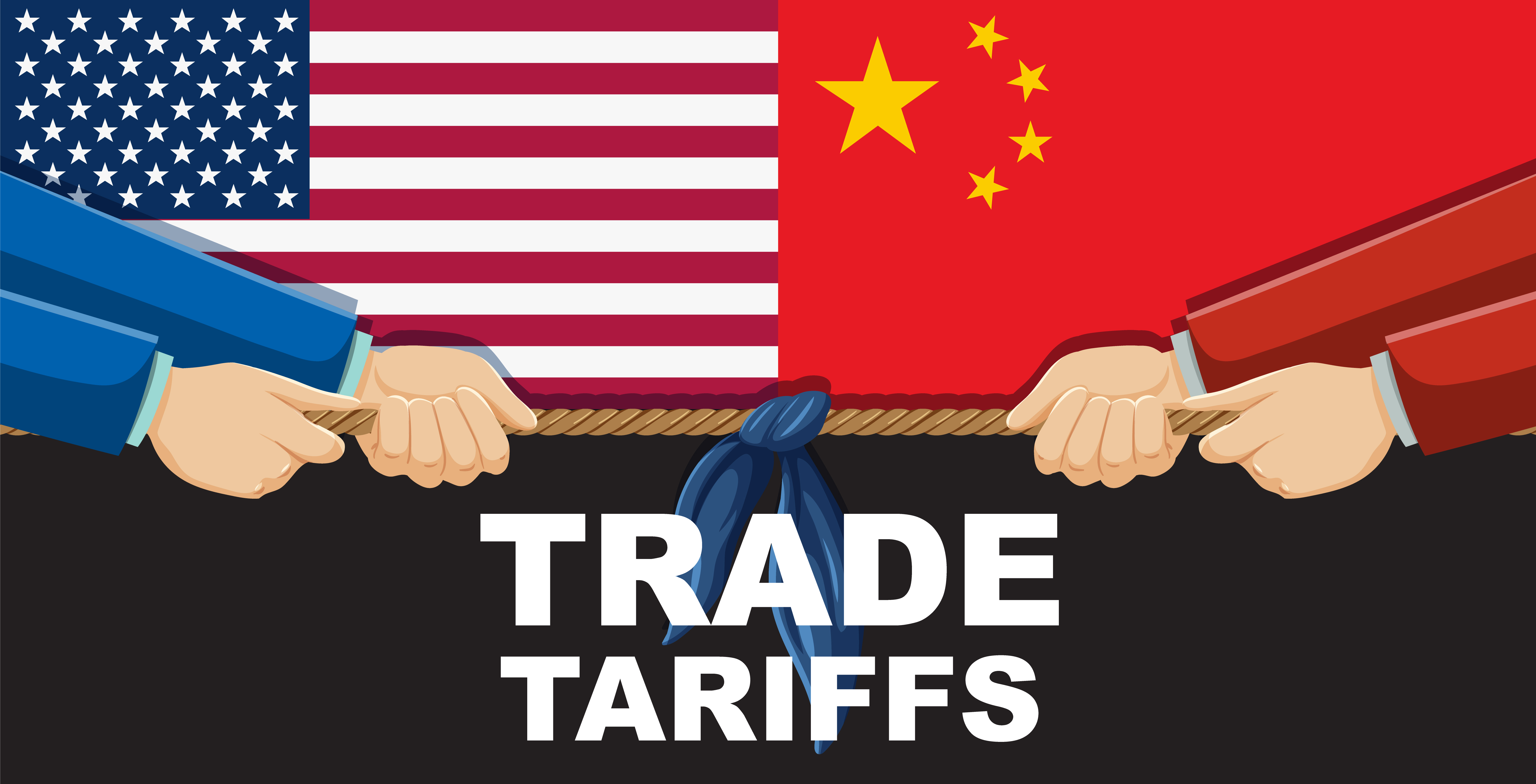News Feed
Despite Friday’s Crash, Sensex Is Up Over 5,000 Points from April’s Low. Time to Reconsider Your SIP Strategy?

The Sensex saw a sharp fall last Friday, dropping more than 700 points. Yet, it is still more than 5,000 points above its low back in April. This big rebound has many investors wondering if now is a good time to rethink their Systematic Investment Plan (SIP) approach. In this article, we will explain what happened in the market, what it means for SIP investors, and how you can make smart choices during this uncertain time.
Table of Contents

Sensex – Overview, History, Selection
What Caused the Recent Sensex Drop?
Last Friday’s fall caught many investors off guard. Here are the main reasons:
- Geopolitical tensions between India and Pakistan grew, making investors nervous.
- The Nifty index slipped just below 24,000, a key psychological level, but bounced back later.
- Some sectors like Information Technology showed strength even when the market overall was weak.
- Financial stocks helped steady the market during the rollercoaster day.
These events show that the market is still fragile. The Sensex reflects how investors feel about the economy’s future. STOCK FEED
Detailed Market Analysis of the April 7 Crash
On April 7, 2025, the Sensex plunged over 3,200 points intraday (4.29%) and closed down 2,227 points (2.95%), signaling a rapid selloff triggered primarily by global volatility. Factors such as Donald Trump’s tariff policies and fears of a US recession significantly influenced this downturn. Experts emphasized caution during this volatile period but advised investors to maintain their SIPs, banking on eventual stability and recovery (Times of India, April 7, 2025).
How the Sensex Bounced Back by Over 5,000 Points
Even with the drop last week, the Sensex has climbed more than 5,000 points since April. This shows there is strong demand for Indian stocks. Here’s why:
- The market’s quick rebound hints at confidence in India’s growth.
- Foreign Institutional Investors (FIIs) have been buying actively, giving more money to the market.
- The tech and financial sectors are leading the rise, which often hints at economic strength.
For people invested in the Sensex, this recovery is a good sign. But it also means caution is still needed.

How Sensex breached the 50,000-mark, showcasing its resilience over time.
Video Insight: April 7 Crash and the Path Forward
For an expert breakdown of the April 7 crash and what investors should watch for next, this concise video analysis explains the causes, sector-specific impacts, and why continuing SIPs might be beneficial despite the volatility. It highlights potential triggers for recovery, including policy reversals and US yield declines:

Click to watch: Indian Stock Markets Crash — Expert Analysis on Sensex Fall and Recovery
Should You Change Your SIP Strategy Now?
A lot of investors are asking if they should keep investing in SIPs when the market is so shaky. Let’s look at both sides:
Why Keep Your SIPs Running?
- Rupee-cost averaging: SIPs help spread out buying over time. This means you buy fewer shares when prices are high and more shares when prices fall.
- Long-term growth: Markets go up and down. If you stay invested over years, your investments tend to grow.
- Benefit from recovery: Since Sensex is well above April’s low, continuing your SIP captures this rise.
Reasons to Review or Adjust SIPs
- Geopolitical risks could keep the market volatile for longer.
- If your SIP focuses too much on risky sectors, you may want to spread out your investments.
- If your investment goal is short-term, you might think about safer options.
What Experts Suggest for SIPs During Volatile Times
- Keep your focus on the long term.
- Stick to your SIP plan instead of stopping during dips.
- Think about diversifying your SIPs into different sectors or asset types.
- Don’t react quickly to every bit of news. Stay calm and make slow, planned changes if needed.

The Sensex is a key benchmark index for measuring market sentiment in India, important for SIP investors to understand.
What Social Media and YouTube Say About SIPs and Sensex
Many investors turn to social media and YouTube for advice when the markets feel uncertain. Here are common messages:
- Social media communities say SIPs are a smart way to handle market ups and downs.
- On YouTube, experts explain how rupee-cost averaging works and why SIPs help build wealth.
- Influencers warn against panic selling and recommend sticking to your investment goals.
These voices agree that staying consistent with SIPs is often the best move, especially when markets are still in recovery.
How to Handle SIP Investments During Sensex Volatility
Here are some simple tips for SIP investors during uncertain times:
- Keep investing the same amount regularly. Market ups and downs will balance out over time.
- Look at your overall portfolio. If one sector has too much weight, consider adding others.
- Stay patient. Big gains usually come with time, not quick fixes.
- Keep learning about the market but avoid overreacting to daily market news.

Monthly trends of S&P BSE Sensex index illustrate the typical volatility and cyclical nature of the market.
Conclusion: Stay the Course but Be Smart
Even with last Friday’s big drop, the Sensex is still way above its April low. This shows the Indian market has strength. For SIP investors, the best step is to keep a steady hand. Don’t stop investing because of a short-term fall. Instead, stay focused on your long-term goals. Using SIPs means you buy shares regularly, which lowers risk during ups and downs. You can also spread your investment across sectors to avoid too much risk in any one area. Keep an eye on important news, but don’t let it drive you to quick decisions. The key to winning in the stock market is simple: be consistent, stay patient, and keep learning. This approach helps you grow your money even when the market looks shaky. By following these ideas, you can make your SIP strategy work for you. The Sensex may go up and down, but with smart planning, your investment journey can stay on the right track.
News Feed
Stock Markets Rise as Trump Softens Stance on China Tariffs and Keeps Fed Chair

Trump Signals Easing of China Tariffs
The U.S. stock markets rose sharply after former President Donald Trump hinted at lowering the high China tariffs he once imposed. At the height of the trade war, tariffs on Chinese goods reached up to 145%. China responded with its own tariffs of about 125% on U.S. goods. These high tariffs made trade between the two countries difficult and created uncertainty in the markets. Now, Trump said that these China tariffs would “come down substantially.” This change hints at less tension between the U.S. and China and a chance for better trade talks. Trump also used a softer tone when mentioning Chinese President Xi Jinping, suggesting that the two countries might start talking again. This news lifted investor spirits and led to a strong rise in the stock markets.
Table of Contents

Despite Trump tariffs, the U.S. needs to rethink trade policies as market dynamics evolve. For a visual timeline and context on the tariff escalations over the years, the following graphic illustrates the key moments in the US-China tariff war:

Timeline of the US-China war on tariffs, showing tariff impositions and retaliations over time.
How the U.S. Stock Markets Reacted
Investors quickly welcomed the news about the likely drop in China tariffs. In just one day, major U.S. stock indexes showed solid gains:
- Dow Jones Industrial Average went up about 1%
- S&P 500 increased 1.66%
- Nasdaq jumped by 2.5%
These rises show how sensitive the markets are to tariffs and trade relations with China. Trump’s statement about lowering China tariffs made investors hopeful that the damaging trade war could slowly end. This hope means better business conditions for companies that depend on trade with China.

Visual breakdown of key U.S. products impacted by Chinese tariffs, highlighting affected industries.
Treasury Secretary Talks Trade Talks
Treasury Secretary Scott Bessent added to the positive mood by saying the government is open to negotiating a big trade deal with China. He pointed out there could be a “big deal” if both sides want to fix trade issues together. The Treasury’s statement suggested talks might cover issues like tariffs, technology sharing, and intellectual property. A deal could include lowering tariffs in stages, thanks to commitments from both the U.S. and China. Fair trade rules might also be part of the agreement.
Stability in Federal Reserve Leadership
At the same time, Trump cleared up earlier talk about firing Federal Reserve Chair Jerome Powell. He said he had “no intention” of removing Powell. This news eased worries about sudden changes in U.S. monetary policy, which could affect interest rates and inflation control. Stable Fed leadership is important for investors. Knowing Powell will stay means less risk of unexpected moves in monetary policy. This certainty helped keep stock markets calm and supported the positive reaction to the tariff news.
China’s Firm Stance on Tariffs
Though the U.S. has softened its approach, China remains firm. Chinese officials say there are no ongoing tariff talks with the U.S. unless all U.S. tariffs get rolled back first. Beijing wants the U.S. to drop all its tariffs before serious talks can begin. China is also making moves to defend its interests. It has raised tariffs on some U.S. products, limited exports of rare earth metals important for tech, and filed complaints with the World Trade Organization. These firm steps show that China does not want to give in easily.

China announced significant tariff hikes in retaliation to U.S. tariff policies. To understand the latest official stance from China, this Bloomberg Television video provides important insight into China’s comments on the ongoing tariff situation and trade talks:
Watch: China Says US Should Not Mislead Public on Trade Talks
Analysis of China’s position on potential tariff suspensions amid U.S. claims of progress, revealing Beijing’s insistence on full tariff removal before negotiations.
Similarly, the evolving rhetoric from Trump amid market reactions is captured in this recent video:
Watch: Trump claims U.S. making tariffs progress, China denies…
Coverage of Trump’s shifting statements on tariff reduction, contrasting with China’s denials and White House demands for reciprocal concessions.
Key Points to Remember
- Trump plans to lower high China tariffs, moving away from his tough earlier approach.
- U.S. stock markets rose sharply as investors grew hopeful about easing trade tensions.
- The Treasury Secretary said the U.S. is open to broad trade talks with China.
- China insists the U.S. drop all tariffs before formal talks start.
- Trump confirmed that Jerome Powell will stay as Federal Reserve Chair, calming markets.
What to Watch Next
The softening of the U.S. on China tariffs has lifted market moods, but things can still change quickly. Investors should keep an eye on:
- Official trade talks and any agreements on reducing tariffs
- China’s response to the U.S. tariff rollback offers
- Any new statements from the Federal Reserve on interest rates
- Political news that could affect trade and the economy
Conclusion
The recent easing of the hardline China tariffs by Trump, combined with stability in Federal Reserve leadership, gave a fresh boost to U.S. stocks. While China has not yet softened its position, the rise in markets shows growing hope that the long, tense tariff fight might ease soon. This shift could open doors to better trade relations and stronger economic growth. Keeping up with changes in China tariffs and trade talks will be key for investors and businesses watching these developments.
For additional context on the overall tariff landscape and historic escalations, the U.S.-China Business Council provides comprehensive data on tariff rates:

The US-China Business Council charts offering a detailed view of tariff schedules and impacts. Further reading on recent market reactions to Trump’s tariff reversals can be found in this related news article:
Trump reversals on Fed chair, China tariffs send markets higher
Read More
Details Trump’s acknowledgment that 145% tariffs on China must drop “substantially,” prompting a market rally amid White House demands for reciprocal concessions from Beijing.
News Feed
Trade War Fears Hammer US Consumer Expectations; FTSE 100 in Longest Winning Run Since 2019

US Consumer Confidence Falls to a Thirty-Year Low
The mood among the US consumer has taken a sharp turn for the worse. According to the University of Michigan’s consumer expectations index, confidence has dropped by 32% since January. This marks the lowest point in three decades, a decline not seen since the recession of 1990. The main cause is the growing fear over trade wars combined with rising inflation that hits household budgets hard.
Table of Contents

US consumer sentiment has plummeted to levels last seen during the early 1990s recession, reflecting deep worries over tariffs and inflation. When US consumers feel confident, they tend to spend more. This spending boosts the economy. But when consumer confidence drops, people cut back on shopping and other expenses. Now, trade tensions and uncertain tariffs make many Americans hesitant to make larger or extra purchases. This slowdown in spending could hurt economic growth and raise the risk of a recession.News
How Trade Wars Affect US Households and Spending
Trade wars do more than disrupt international relations. They directly impact the US consumer by making everyday goods more expensive. Tariffs placed on imports act like a hidden tax. Experts estimate that by 2025, these costs could add about $1,300 to the average American household’s yearly expenses.

The increasing costs due to tariffs weigh heavily on the economic health of U.S. consumers. Here’s what the trade wars mean for US households:
- Retaliation tariffs by countries like China, Canada, and the EU could shave off 0.2% from US GDP.
- Tariffs raise costs for businesses, which often pass those costs to consumers through higher prices.
- Higher prices on goods and raw materials push inflation up, cutting into disposable income.
Because tariffs add to the price of many products, US consumers face tighter budgets. When money is tight, people tend to buy less, especially items they don’t need right away. This can slow down economic recovery by reducing demand. To dive deeper into the economic impact of these tariffs, a detailed research article from the Tax Foundation explains how these trade policies act as significant tax increases for U.S. households, driving inflation and restraining GDP growth:
Trump Tariffs: The Economic Impact of the Trump Trade War Moreover, the Center for American Progress highlights that these tariffs disproportionately hurt lower-income households by increasing prices and cutting disposable incomes, which could exacerbate inequality and slow economic progress:
Trump’s Trade War is a Major Economic and Strategic Blunder For a comprehensive look at how the trade war escalated after tariffs took effect, watch this news report detailing China’s retaliatory tariffs and their effects on American consumers and businesses: Understanding the Impact of the Trade War: How China Escalated U.S. Trade War after Trump’s Tariffs Took Effect

This video explains how China’s increased tariffs on U.S. goods hit American consumers by raising prices on imports.
FTSE 100 Surges as US Consumer Confidence Wanes
While US consumers grow cautious, international investors look to safer bets. The FTSE 100, the UK’s top stock index, is enjoying its longest winning streak since 2019. This rise is fueled by investors moving money into sectors that hold up well in uncertain times, like consumer staples and healthcare. Why is the FTSE 100 doing well?
- UK companies often offer strong dividend yields, which attract income-focused investors.
- Sectors such as healthcare tend to stay steady even when markets shake.
- Funds are shifting away from US markets as worries over trade wars mount.
This pattern highlights a shift. Investors are growing uneasy about the US economy and are choosing safer sectors abroad. The contrast between struggling US consumer sentiment and rising UK stock markets shows how global money moves in response to uncertainty.
What People Are Saying on Social Media and From Analysts
On platforms like YouTube and Twitter, many are talking about the toll trade wars take on the US consumer and economy. Analysts warn that long-term uncertainty could hurt business investment and job growth. Consumers are advised to budget carefully and focus on essential spending. Key points from social media and experts include:
- Businesses may hold back on hiring or expanding due to trade worries.
- Consumers should tighten their budgets to protect financial health.
- Diversifying investments can reduce risk when trade policy swings markets unexpectedly.
Some discussions highlight how certain parts of the economy cope better than others. This shows how linked trade policy and consumer confidence really are.
What Happens Next for the US Consumer?
The big drop in US consumer confidence signals trouble ahead. Higher costs from tariffs and inflation make it hard for many families to spend as freely as before. If spending slows down too much, it could drag the economy into a recession.
Despite the challenges, some US consumers are still managing to keep spending, though the overall sentiment remains weak. Meanwhile, the FTSE 100’s steady gains point to investors seeking stability elsewhere. They favor sectors less affected by trade issues, showing how important clear trade policies are. To help US consumers regain confidence and boost the economy, a few things must happen:
- Cut tariffs and work on trade deals that improve market access.
- Control inflation to ease pressure on household budgets.
- Create steady economic policies that encourage people to spend.
If these steps are taken, the US consumer can once again drive growth. Confidence can come back, helping families, businesses, and the economy as a whole steer through uncertain times.
By understanding how trade wars shape everyday life, US consumers can better prepare and adjust. Awareness of changing market trends and smart financial choices can help reduce the impact of these global challenges on household spending.
News Feed
US Stock Futures Fall After Trump Says 20-30% Tariffs a Year from Now Would Be a Victory

US Stock Futures React to Tariff Talk
US stock futures are always quick to react to trade talk. Recently, comments from former President Donald Trump on tariffs caused waves in the market. He said a 20-30% tariff set a year from now would count as a win. That line made investors uneasy. Still, the market didn’t all move the same way. It depends on the bigger trade picture and what other signals come from policymakers. On April 23, 2025, US stock futures moved higher. Trump mentioned tariffs on Chinese goods might be lower than feared. This eased some worries. Dow futures surged 1.7%, S&P 500 futures jumped 2.3%, and Nasdaq 100 futures climbed 2.8%. Investors cheered the hope that trade tensions would ease soon. Tech and chip stocks led the rise. Stock futures show early moves before the market opens. They help traders and investors spot how news about trade and tariffs could affect stocks. When trade talks heat up, futures often move fast, showing changes in mood tied to US trade decisions.
Table of Contents

US stock futures rise after three-day losses, reflecting shifting investor sentiment amid trade developments. Before diving deeper, watch this video for an insightful breakdown of how US stock futures react amid ongoing trade tensions and tariff discussions:

U.S. stock futures rise despite confusion over Trump tariff exemptions – YouTube
Timeline of US Stock Futures and Tariff News
April 23 Rally: Good News on Tariffs
On April 23, futures climbed after Trump said tariffs would be “substantially lower” than some scary guesses of 145%. This news lifted futures in big indexes, especially tech stocks. Intel jumped 6%. That helped raise other chip stocks too. Even gold took a hit. Prices dropped 3.5% to $3,300 per ounce. That drop means traders felt more confident in stocks and less need for safe places to park money.

Stock futures today: Live updates reflect positive market reaction to tariffs news.
Early April Sell-Off: Fear Takes Over
Back on April 8, stock futures dropped hard. News of tariffs hitting 86 countries made the market panic. The S&P 500 fell for four days straight, losing 12% of its value. This showed how sensitive futures are to tariff talk. When tariffs look like they could start a trade war, traders often sell fast. Volatility spikes and futures markets swing quickly as investors try to protect their bets.

U.S. stock futures in freefall ahead of market open, illustrating the impact of tariff fears.
What Moves US Stock Futures the Most?
Several things move futures around when tariffs come up:
- Trade policy news: Any talk of raising or cutting tariffs hits futures hard. Investors try to guess what tariffs mean for company profits and supply chains.
- Tech and chip stocks: These sectors feel tariffs on China’s goods more. Their futures jump or fall based on tariff fears.
- Federal Reserve moves: Interest rates and Fed talk also matter. For example, Tesla’s $206 price point acts as a key level watched during tariff shifts.
- Safe havens: When futures drop, gold and bonds usually rise. When futures rally, safe-haven demand falls.

Market snapshot showing live movement in U.S. stock futures.
Social Media’s Role in Futures Sentiment
Social media and YouTube have become key for traders tracking stock futures. These platforms spread news and analysis fast:
- On YouTube, people break down Fed policy and tariffs. They look closely at how these affect tech and chip stocks.
- Twitter and Reddit buzz with ideas on futures moves. Tesla’s $384 resistance level, for instance, sparks speculation tied to futures trades.
- Tariff news often causes rapid mood swings on social media, pushing futures up or down in minutes.
Traders who watch these platforms can spot moods changing before markets open.
What’s Next for US Stock Futures?
Trump’s talk of a 20-30% tariff next year is just speculation now. Still, futures remain sensitive. Traders need to watch:
- Real-time futures prices and charts on sites like TradingView.
- Official updates on tariff timing and trade talks.
- How tariff changes impact different sectors, mainly tech and manufacturing.
US stock futures move fast with tariff news. Watching them helps investors prepare for market swings and manage risk.
Tracking stock futures gives a quick read on how trade talks affect markets. While futures bounced back after Trump’s comments, tariff uncertainty means ups and downs could keep coming. Staying informed is key to navigating markets tied to trade policy shifts.

-

 Funds13 hours ago
Funds13 hours agoMutual Fund Investment 2025: Why Halting Your SIPs Doesn’t Make Sense Even During Market Dips
-

 News Feed1 day ago
News Feed1 day agoOpting for New Tax Regime? Check Out These 5 Benefits
-

 News Feed1 day ago
News Feed1 day agoUS Stock Futures Fall After Trump Says 20-30% Tariffs a Year from Now Would Be a Victory
-

 Insurance1 day ago
Insurance1 day agoRetirement Planning: How Can an SIP Calculator Be Used to Plan Investments
-

 Funds1 day ago
Funds1 day agoChoosing Between Direct and Regular Mutual Funds: Which is More Beneficial 2025 ?
-

 Cryptocurrency3 days ago
Cryptocurrency3 days agoWazirX Plans User Compensation Post-Court Approval on May 13, 2025
-

 Funds4 months ago
Funds4 months agoBest Small-Cap Mutual Funds for 2025
-

 Cryptocurrency5 hours ago
Cryptocurrency5 hours agoPi Network (PI) Price Prediction: Pi Network Whales Stir the Market as $1 Breakout Forecast Gains Momentum
